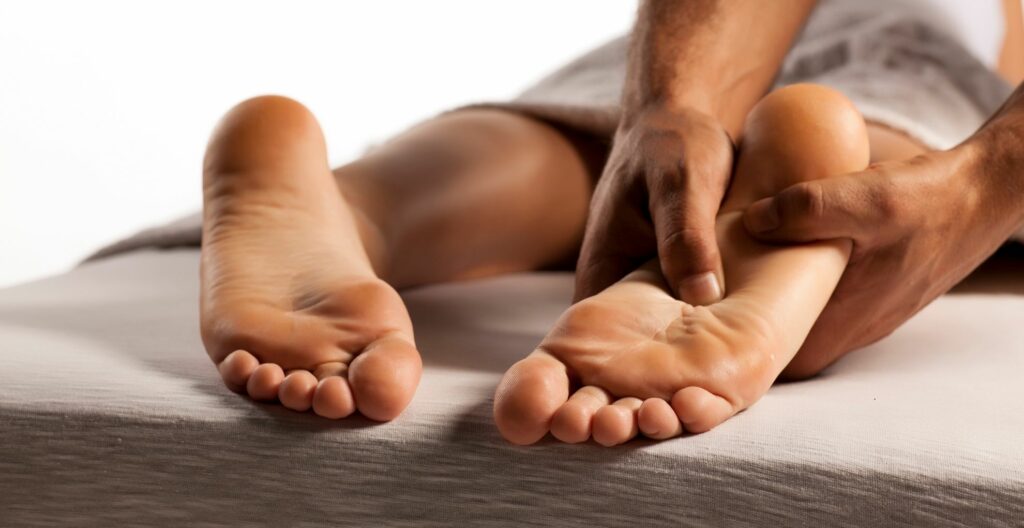Acupressure and Myofascial Release Explained

If you’ve been living with chronic pain, muscle tightness, or constant stress, you’re not alone. Many Australians are searching for ways to relieve pain without relying solely on medication. Whether you sit at a desk all day, train hard at the gym, or struggle with tension that just won’t ease, hands-on therapies like acupressure and myofascial release are becoming trusted, effective options.
Both are forms of manual therapy that aim to restore comfort and mobility, but they work in different ways. This guide breaks down what each involves, including what is acupressure and myofascial release how they fit into Australian healthcare, and how to decide which may be best for you.
Why People Turn to Manual Therapies for Pain Relief
Manual therapies — including massage, physiotherapy, and chiropractic care — are designed to restore natural movement, reduce pain, and promote relaxation. They can complement traditional medicine or serve as standalone approaches for managing chronic pain, muscular pain muscle tension, and mobility issues.
People often seek alternatives like acupressure or myofascial release when:
- Painkillers only provide temporary relief
- Stress contributes to ongoing tension
- They want to improve posture, flexibility, or circulation naturally
- They’re looking for holistic pain relief techniques that work with the body, not against it
What Are Acupressure and Myofascial Release?
Though they sound similar, acupressure and myofascial release come from very different origins.
- Acupressure comes from Traditional Chinese Medicine (TCM) and focuses on stimulating specific pressure points to promote energy flow and balance.
- Myofascial release, on the other hand, is rooted in Western physical therapy and targets the fascia — the connective tissue surrounding your muscles — to release restrictions and improve movement.
Both aim to relieve pain, improve function, and reduce stress, but their techniques and underlying theories differ.
Acupressure: The Ancient Art of Pressure Point Healing

What Exactly Is Acupressure?
Acupressure is a gentle, non-invasive therapy developed thousands of years ago in China. It’s based on the idea that energy, or Qi (pronounced “chee”), flows through pathways called meridians in the body. When these pathways are blocked, it can lead to pain, stiffness, or illness.
By applying gentle pressure to specific acupressure points, practitioners aim to restore energy flow, calm the nervous system, and encourage the body’s natural healing process.
What Happens During an Acupressure Session?
During a session, you’ll usually remain fully clothed while your practitioner applies steady finger or thumb pressure to targeted points. Sessions typically last between 30–60 minutes.
Some people describe the sensation as mild discomfort that quickly turns into relaxation or warmth. The goal isn’t deep tissue pressure, but rather stimulating points that influence muscles, nerves, and circulation.
Is There Science Behind Acupressure?
Yes — growing research supports acupressure for several conditions:
- Headaches and migraines
- Nausea and motion sickness
- Menstrual cramps
- Chronic pain and stress
Systematic reviews show acupressure can provide measurable relief in some cases, though results vary between individuals. While not a cure-all, it can be a safe, complementary therapy for managing pain and promoting better circulation and relaxation.
That said, evidence for some conditions (like arthritis or chronic fatigue) is still limited, so acupressure should be part of a broader care plan rather than a stand-alone solution.
Who Provides Acupressure in Australia?
In Australia, acupressure is typically provided by:
- Traditional Chinese Medicine practitioners (registered with AHPRA)
- Acupuncturists who also use acupressure techniques
- Massage therapists with advanced training in TCM-based methods
Always check that your practitioner has recognised qualifications and professional registration before beginning treatment.
Myofascial Release: Releasing Tension in the Body’s Connective Tissue

What Is Fascia and Why Does It Matter?
Fascia is the connective tissue that wraps around every muscle, bone, and organ in your body — like a stretchy web that holds everything together. When this tissue becomes tight, inflamed, or injured, it can limit movement and cause chronic pain.
This tightness often develops into trigger points or “muscle knots,” which can refer pain to other areas — for example, tension in your upper back might cause neck pain or headaches.
How Trigger Points Cause Pain
Trigger points are small, sensitive areas within the muscle or fascia that can lead to referred pain, stiffness, or weakness. They can result from poor posture, repetitive strain, stress, or sports injuries.
By targeting these specific trigger points, myofascial release helps release tension, improve blood flow, and restore the body’s natural mobility.
What Happens During Myofascial Release Therapy?
During treatment, your therapist uses slow, sustained pressure on restricted areas of fascia. Unlike massage, the focus is on holding pressure until the tissue softens and lengthens — rather than kneading the muscles.
Sessions usually involve a mix of hands-on stretching, sustained compression, and gentle movement to improve the body’s range of motion. You might feel mild tenderness during or after treatment, but this typically subsides within 24 hours.
What Conditions Benefit Most from Myofascial Release?
Evidence supports myofascial release and trigger point therapy for conditions like:
- Chronic low back pain
- Postural imbalances
- Sports injuries and muscle strains
- Neck and shoulder stiffness
- Myofascial pain syndrome
It’s also beneficial for improving joint movement, reducing inflammation, and enhancing overall connective tissues health.
Who Provides Myofascial Release in Australia?
This therapy is commonly offered by:
- Physiotherapists (AHPRA registered)
- Myotherapists (members of professional associations)
- Remedial massage therapists with advanced training
Because myofascial release is a recognised part of musculoskeletal therapy, it often forms part of broader rehabilitation and injury management programs.
Key Differences: Which Approach Suits You Best?
Both therapies aim to relieve pain and restore mobility, but their philosophies and techniques differ.

Both therapies can help with:
- General muscle tension
- Chronic pain conditions
- Sports recovery and maintenance
- Reducing stress and promoting relaxation
Safety, Effectiveness, and Realistic Expectations
Are These Treatments Safe?
Both acupressure and myofascial release are considered safe when performed by qualified practitioners. Minor side effects can include temporary soreness, mild fatigue, or light bruising.
Avoid these treatments if you have:
- Open wounds or recent fractures
- Infectious skin conditions
- Bleeding disorders or take blood-thinning medications
- Serious medical conditions without your doctor’s clearance
Always let your therapist know your full medical history before starting treatment.
How Quickly Will You See Results?
Some people notice relief after one session, while others may need three to four treatments to experience full benefits, especially for acute injuries . Chronic or long-term conditions usually take longer to improve as tissues and nervous system patterns adjust.
When to See a Doctor Instead
Manual therapies are not a substitute for medical care. If you experience:
- Sudden, severe pain
- Unexplained swelling or numbness
- Pain following a recent injury
- Symptoms that worsen despite treatment
…see your GP or physiotherapist for medical evaluation first.
The Real Cost of Treatment (and What Your Health Fund Covers)
Qualifications and Regulation
- Acupressure providers: TCM practitioners, acupuncturists, and some massage therapists registered with AHPRA.
- Myofascial release providers: Physiotherapists, myotherapists, and remedial massage therapists trained in fascia techniques.
Typical Costs and Coverage
- Sessions range from $90–$130 on average.
- Private health insurance may cover part of the cost under extras (for physiotherapy, myotherapy, or remedial massage).
- Medicare rebates may apply if the therapy is provided by a physiotherapist under a chronic disease management plan.
Check your policy for rebate amounts and waiting periods before booking.
How to Find the Right Practitioner

Choosing the right professional makes a big difference. Look for:
- Recognised qualifications and registration
- Experience with your specific condition
- A treatment plan that includes progress tracking
- A clear explanation of expected outcomes and costs
At Incline Health Leichhardt, our allied health team offers both evidence-based and holistic approaches to recovery, including physiotherapy, remedial massage, and myofascial release.
Explore our Injury Recovery and Management services to find a treatment plan that supports your body and lifestyle.
Frequently Asked Questions
Do These Treatments Hurt?
You might feel mild discomfort or stretching during treatment, but it shouldn’t be painful. Most people feel relaxed afterward.
How Many Sessions Will I Need?
Acute issues may resolve within 2–3 sessions. Chronic pain or postural issues often need ongoing care for 4–8 weeks.
Can I Do These Techniques at Home?
Some gentle self-treatment methods, like using a massage ball or light pressure, can help between sessions. However, professional guidance ensures you target the right areas safely.
How Do I Know If It’s Working?
You’ll notice gradual changes — reduced pain, better mobility, improved posture, and a general sense of wellbeing.
Should I Stop Other Treatments?
No. These therapies can complement medical care, physiotherapy, or exercise programs as part of a comprehensive recovery plan.
What If I Have a Chronic Condition?
If you have ongoing pain, consult your GP or physiotherapist first. Myofascial release and acupressure can be valuable adjuncts, but should fit within a broader healthcare plan.
Ready to Give One a Go?
If you’re tired of relying on painkillers or feeling stiff and sore, acupressure and myofascial release offer safe, effective ways to alleviate pain and ease pain naturally.
Start by discussing your symptoms with a qualified practitioner — or visit Incline Health Leichhardt to explore personalised options for your injury recovery and management journey.






